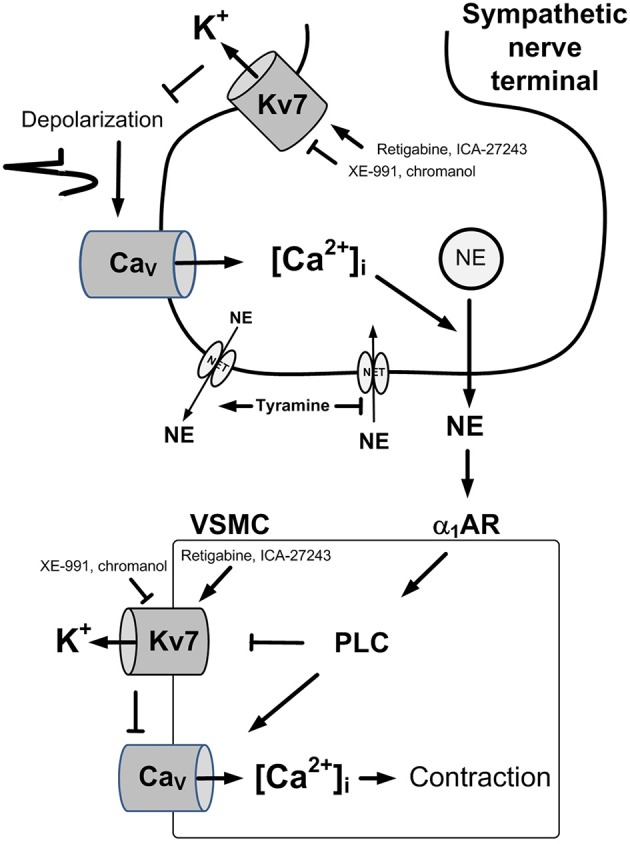Figure 1.

Control of norepinephrine release and VSMC tension. A rise in [Ca2+]i stimulates vesicular release of norepinephrine in sympathetic nerve terminals (Upper) and precipitates VSMC contraction through activation of myosin light chain kinase (Lower). A rise in [Ca2+]i occurs in the nerves in response to depolarization which activates the entry of Ca2+ through L-type voltage-sensitive Ca2+ (Cav). In VSMC, a rise in [Ca2+]i occurs through activation of the PLC pathway, stimulated by for instance by the α1AR. The PLC pathway allows the release of Ca2+ from intracellular stores (not indicated), or the entry of Ca2+ through Cav, either directly, or through depolarization following inhibition of Kv7 channels. Hyperpolarizing Kv7 channels will therefore stabilize both cell types and prevent transmitter release and VSMC contraction. Pointed arrows—stimulation. Blunted arrows—inhibition. NE, norepinephrine; NET, norepinephrine re-uptake transporter.
